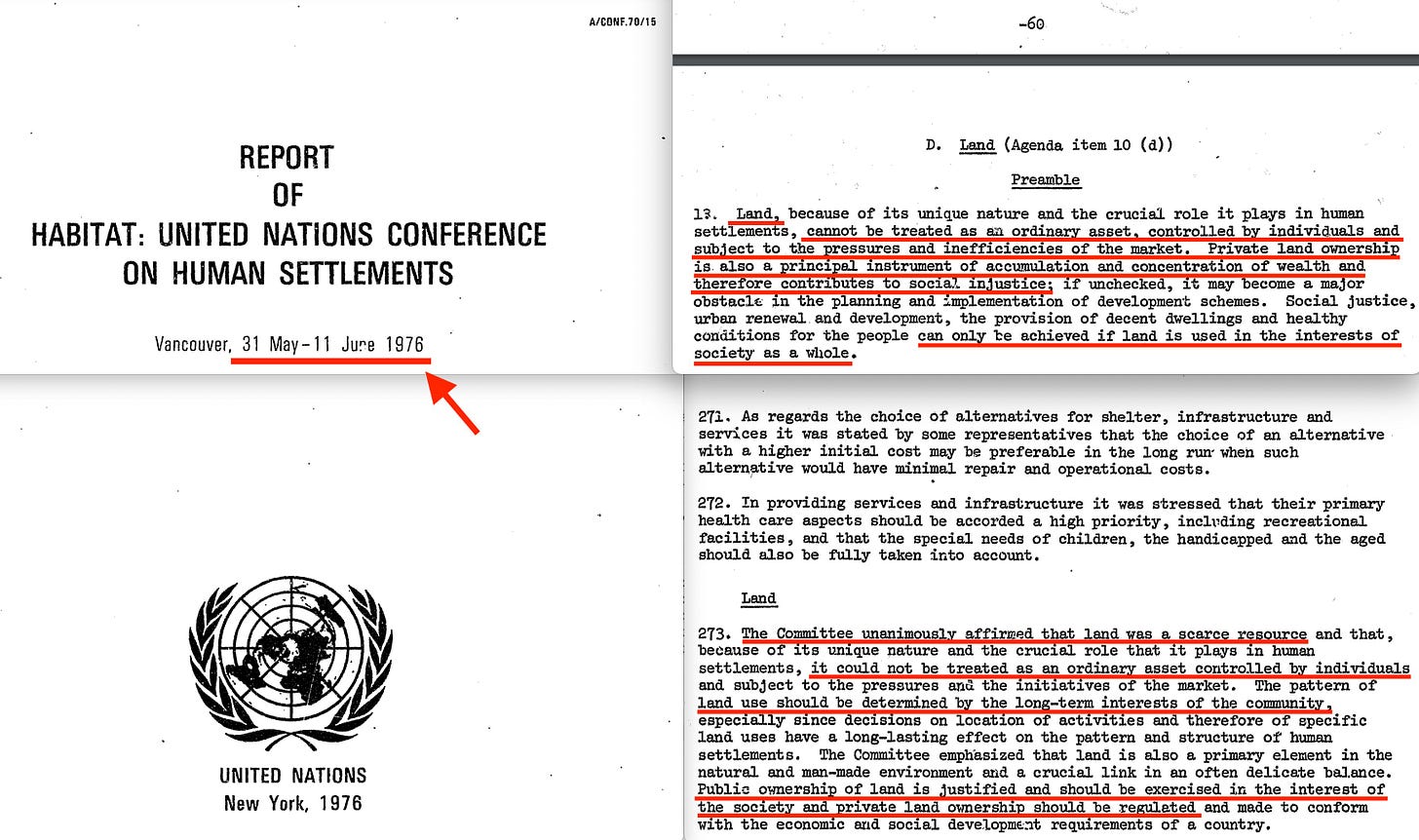One topic which so far has escaped attention is the reform of land ownership. Because in the future, private ownership of land will be prohibited. This was outlined already in 1976, via UN Habitat.
The document in question is the ‘REPORT OF HABITAT: UNITED NATIONS CONFERENCE ON HUMAN SETTLEMENTS‘1. The document in question specifically is the ‘Vancouver Declaration’.
‘13. Land, because of its unique nature and the crucial role it plays in human settlements, cannot be treated as an ordinary asset, controlled by individuals and subject to the pressures and inefficiencies of the market. Private land ownership is also a principal instrument of accumulation and concentration of wealth and therefore contributes to social injustice; if unchecked, it may become a major obstacle in the planning and implementation of development schemes. Social justice, urban renewal, and development, the provision of decent dwellings and healthy conditions for the people can only be achieved if land is used in the interests of society as a whole.‘
And just to hammer home -
‘The Committee unanimously affirmed that land was a scarce resource and that, because of its unique nature and the crucial role that it plays in human settlements, it could not be treated as an ordinary asset controlled by individuals and subject to the pressures an the initiatives of the market. The pattern of land use should be determined by the long-term interests of the community, especially since decisions on location of activities and therefore of specific land uses have a long-lasting effect on the pattern and structure of human settlements. The Committee emphasized that land is also a primary element in the natural and man-made environment and a crucial link in an often delicate balance. Public ownership of land is justified and should be exercised in the interest of the society and private land ownership should be regulated and made to conform with the economic and social development requirements of a country.‘
But things are never that simple with the ‘honest’ and ‘transparent’ organisation named the ‘United Nations’. The likelihood of them coming right out and admitting to eliminating private ownership is essentially zero - unless you develop an understanding of their manipulative and intentionally opaque language.





